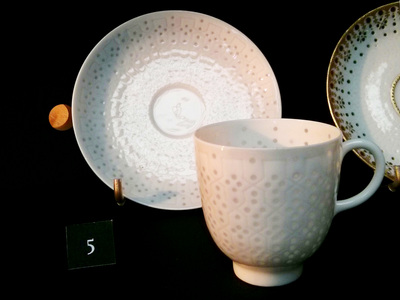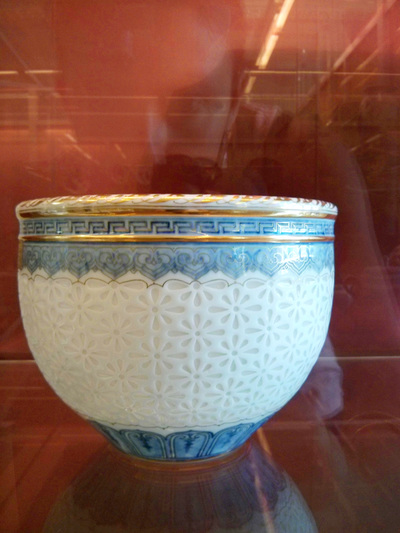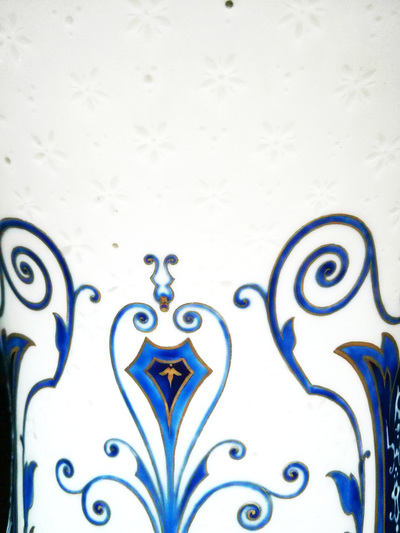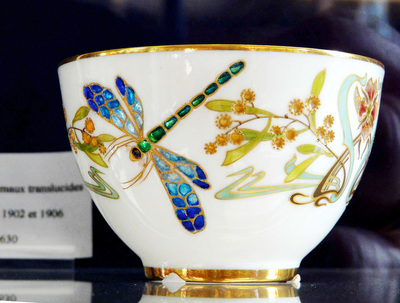| | Recently, I visited both the Cité de la Céramique in Sèvres and the Musée Adrien Dubouche in Limoges, and I saw some absolutely beautiful ceramics. Both their collections have mainly very fine pieces, high quality objects made with the best skills available at the time. At both museums, I spend lots of time staring at porcelains made with the rice grain technique. Even though it's called "rice grain", it seems that no rice grain was ever used for this technique. The piece is cut out and then all the holes are filled with glaze. After the firing, the patterns can be seen against the light as they are translucent whereas the body of the piece doesn't let the light go through. This technique seems to be originally from Turkey but arrived in China around the 14th century. Later, it was also used in Europe as engineers and craftsmen were trying to create a porcelain as beautiful and white as the Chinese one. One of the most famous pieces exhibited at the Musée Adrien Dubouche is probably the full service made in 1878 for the World's Fair by the Manufacture Pouyat. |
But the one that really caught my eyes was the Coupe Libellule by the same manufacture. Instead of filling the holes with translucent glaze, they used coloured glazes, and the result is absolutely stunning. The colours are unusually bright, due to the light filtering through them. Unfortunately, this was technically challenging and quite expensive so they stopped using that technique at the beginning of the 20th century.
Most of us are familiar with the white and blue bowls used in Asian restaurants, but this technique is still used by contemporary potters. The Finnish potter Eeva Jokinen is one of them: the rice grain technique allows her to play with light quite remarkably and the pieces she makes are beautiful. Chantal Lumineau is a French potter who also used this technique, but her work is more geometric as she cuts out triangles.
I searched quite a bit to see if anyone else ever used coloured glazes with the rice grain technique but so far, I didn't find anyone. If you know any potter doing this, please let me know!
Most of us are familiar with the white and blue bowls used in Asian restaurants, but this technique is still used by contemporary potters. The Finnish potter Eeva Jokinen is one of them: the rice grain technique allows her to play with light quite remarkably and the pieces she makes are beautiful. Chantal Lumineau is a French potter who also used this technique, but her work is more geometric as she cuts out triangles.
I searched quite a bit to see if anyone else ever used coloured glazes with the rice grain technique but so far, I didn't find anyone. If you know any potter doing this, please let me know!




